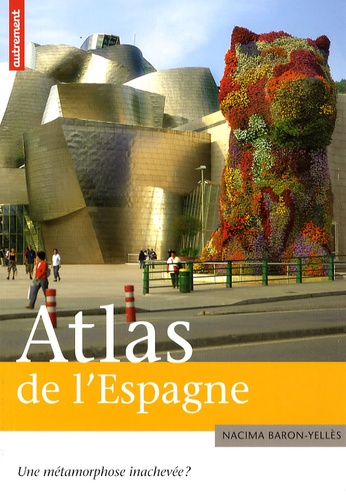editions other spent last year one of the books in their collections Atlas / Monde the Spain. A country still viewed as ultimately not very important in Europe and the world today, but this is really the case.
Nacima Baron-Yelles recalls in his introduction . Since 1975 and the death of Franco, the country has indeed experienced a profound transformation territorial, economic and social , which accelerated with the entry into the EEC, now EU in the 90s. With European integration in 1986, Spain took advantage of his delay in enjoying an influx EU funds for regional development, while the choice of the euro. The country has even become a model of fiscal restraint in international institutions and an example given for the countries of Eastern Europe that joined the EU in the future. On the political front, Spain has consolidated democracy in applying a degree of decentralization within its autonomous communities , while the state privatize large companies, thus the birth of large industrial groups. To overcome the remoteness of the European megalopolis, the Spain has also developed infrastructure and communication facilities Modern that changed the lifestyle of national cities. However, the 2008 crisis has has curbed an array of bright spots . Unemployment is soaring, growth built on building collapses, territorial authorities reveal their opacity, the asset that was the immigrant labor blocks of innovation, strategic resources such as coastal land are ravaged by speculation . But the dream of building a prosperous Spain, having a say in Europe and internationally, remains a central issue.
A double page is first devoted to Spain, and footbridge crossing the world, and Spain. The following double page presents some historical maps of the country and a chronology of the twentieth century commentary. The atlas is then organized into 5 parts. In the first, Baron-Nacima Yelles details the changes are contemporary English society . The second is devoted to economic changes . The third approach to the territorial changes are . The fourth explains debates and policy issues. The last, finally, attempts to identify the identity and dream English . The atlas, which is obviously a plus, full of maps particularly clear: it was not necessarily the case with all previous volumes of the collection. Here, despite a few cards a little less readable, choice of figures and mapping techniques appears to be highly relevant, it welcomes it.
Ultimately, the geographer dissects this "incomplete metamorphosis" of Spain, 8th largest economy, but only the 14th if we take the HDI as a criterion. She stays late, for example, perspective coverage provided by the social welfare state . It is a long way since 1992 , which has seen the world and see the new Spain: fourth centenary of the discovery of Christopher Columbus, the year of the Universal Exhibition in Seville and Barcelona Olympics . Spain is far away, so far, other European countries in technology and productivity. But the whole history of this country is made of alternating suns and moons, ups and downs. Spain is now in a bottom, where it must invent a new model of development. This development will have to learn to manage scarce resources (water ) or expensive ( imported energy ). The labor force, large and qualified executives must find its measure-less underground economy, precarious and seasonal. Spain also faces the problem of integrating a large foreign population and diverse , the threats posed by global warming, etc.. In all this, civil society, which built the country's democracy, has an important role to play.
We will dig the story using the bibliography provided index. A great volume of the collection Atlas / World among other .

0 comments:
Post a Comment